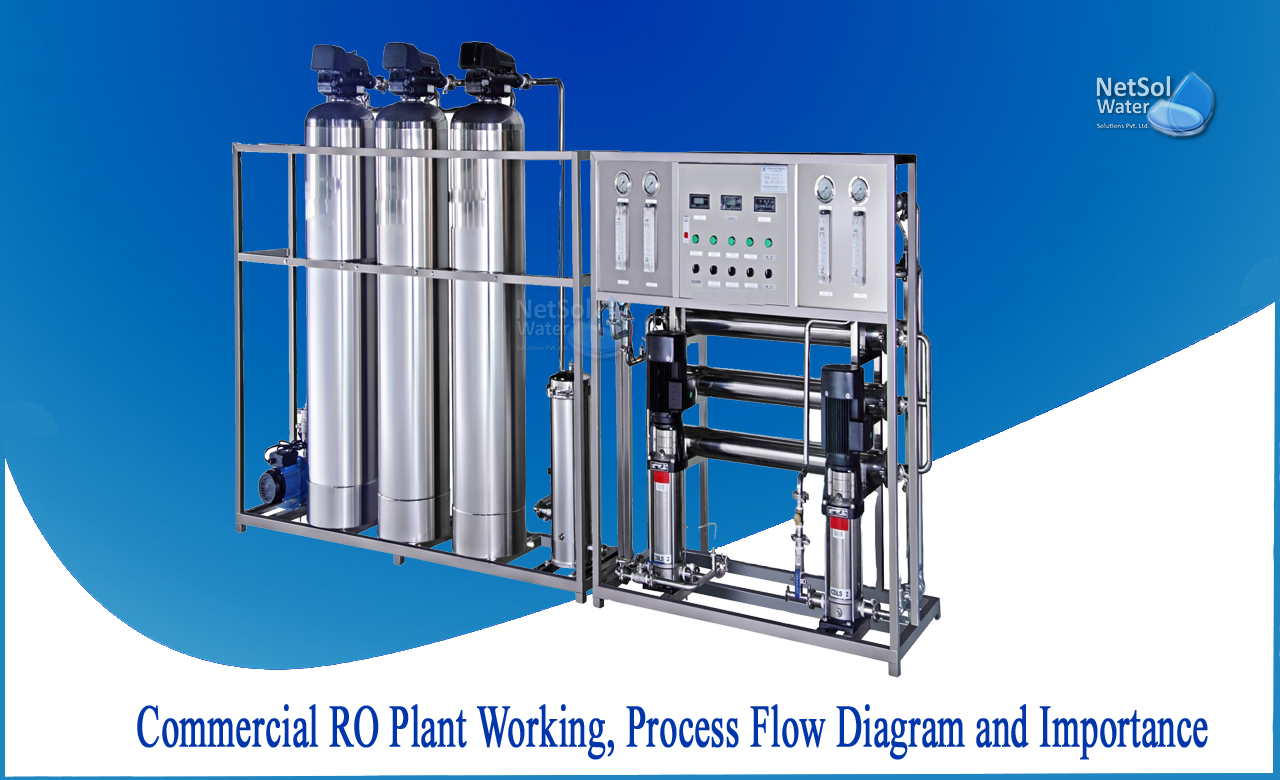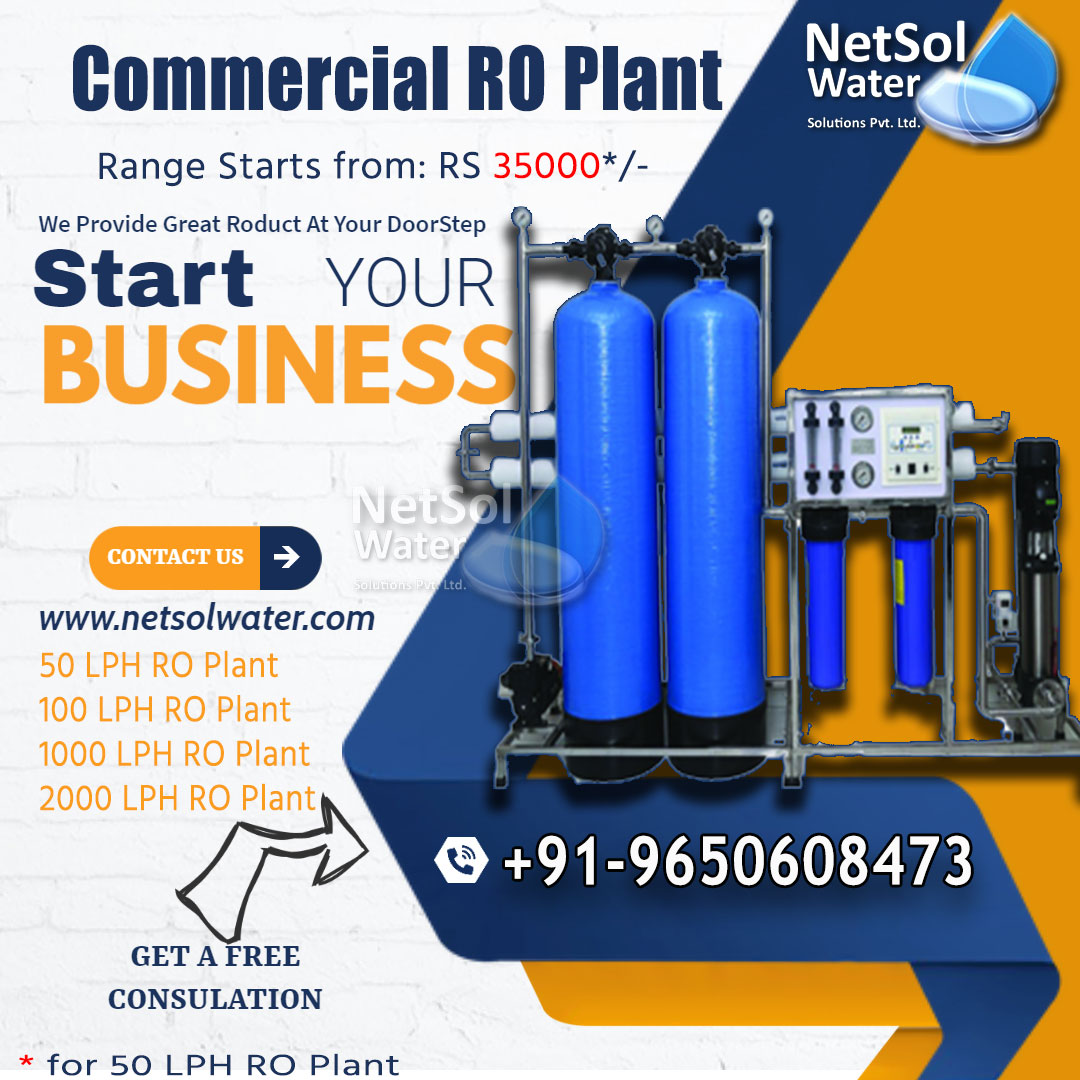Overview: Reverse Osmosis
Reverse osmosis (RO) is the most developed membrane technique for desalination at a low cost, and it is used in nearly half of the world's desalination facilities.
Reverse osmosis is a pressure-driven membrane separation process that can remove all suspended particles, dissolved materials, and colloids from a liquid mixture with an operating pressure of 1.5–12 MPa and a cut-off limit of 0.1–1 nm.
Reverse osmosis is the most advanced membrane liquid separation method available, capable of blocking all suspended particles, dissolved matter, colloids, dissolved salts, and organic materials with a molecular weight greater than 100. Leachate molecules, on the other hand, can pass through.
What are Commercial RO Plants?
The most cost-effective water treatment option is commercial reverse osmosis systems, which may be found in areas like shopping malls and hospitals.
A commercial RO plant eliminates all contaminants from water, making it suitable for a wide range of commercial applications. It removes contaminants such as non-essential metals, caustic salts, and chemicals from the water.
The Working Process of a Commercial RO Plant
Micro-membrane technology is used in commercial RO plants, which is a sophisticated filter that eliminates even the tiniest particles from water, making it clean and safe to drink. The filtering process comprises of many phases, each of which effectively removes particles and pollution such as chemicals, hazardous compounds, and corrosives, resulting in water that is free of illness-causing microorganisms and is safe to drink.
What are the process flow diagram of commercial RO system?
Reverse osmosis is a lengthy procedure and to guarantee that the end results are exceptional, facilities in Netsol Water were built using cutting-edge technology and are only handled by specialists.
The procedure begins with the collecting of contaminated water, which is then purified via numerous stages, each of which filters out a different type of pollution, ranging from chemicals and salts to metal fragments and caustic substances that may otherwise be harmful to humans. The micro-membrane installed within reverse osmosis facilities is in charge of separating these dangerous particles from the liquid, resulting in the production of water that is certified clean and suitable for commercial use.
1- Pre-Treatment is the first step in the treatment process-
i) Water clarification
ii) Filtration with sand
iii) Water softening
iv) Activated carbon filters
v) Cartridge filters

2- After-Treatment Care-
i)Ozonation
ii) Ultraviolet light
iv) Chlorination Techniques
The three processes of full solutions are pre-filtration (micro-filtration and activated carbon adsorption),purification, and post-filtration (re-mineralization).
a) Pre-filtration
To eliminate dangerous particles, an adsorption filter and a micron filter are utilized; a string wrapped filter element with a pore size of 5 micron is suitable. An activated carbon (AC) filter adsorbs the chlorine and eliminates the odour and taste.
b) Purification
To reduce the contaminants, Netsol recommends, Nano or low RO filtering. It's essentially the same procedure as a watermaker, but at a lower pressure that's suitable for drinking.
c. Post filtration
The permeate is mildly acidic (depending on the quality of the input water) and chemically tasteless after purification. To reach a healthy alkaline pH level of above 7, the permeate is passed through an 8 mm mineral cartridge (Ca, Na, K, Cl, Mg, Fe, Zn, Cr). Based on your water pressure and flow rate, the permeate gathers up these minerals and generates healthy and delicious drinking water.
The best commercial RO plant manufacturers in India!
Our plants are made with great care and attention to detail, which is why they function so well. These plants are both cost-effective and efficient, capable of generating thousands of litres of pure, filtered water.
If you need help in installing an efficient Commercial or Industrial RO system, contact us at Netsol Water Solutions. We can help you with design calculations, budgetary expenses, preliminary layouts, and a lifetime cost analysis.




